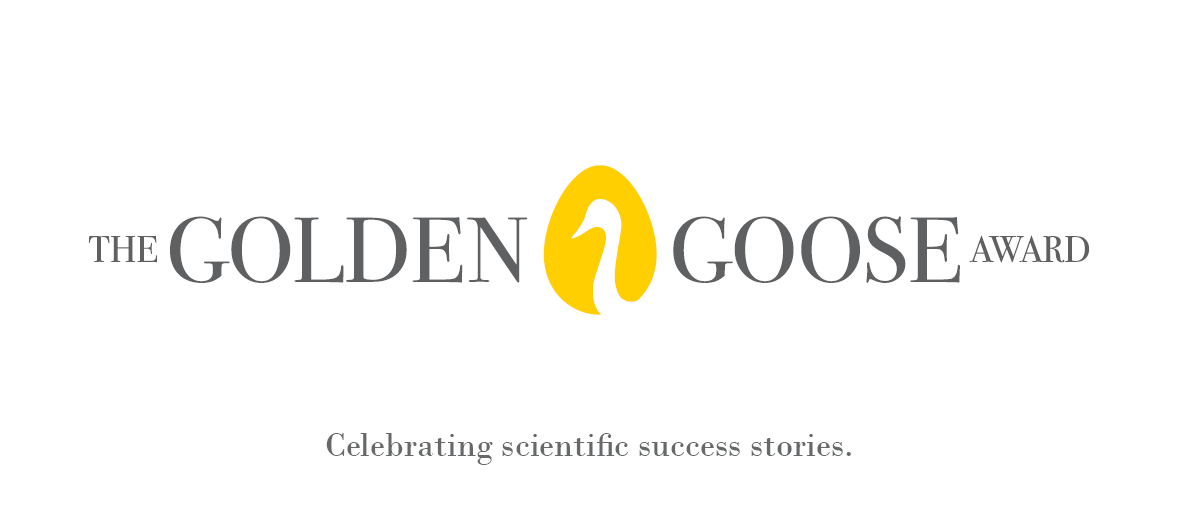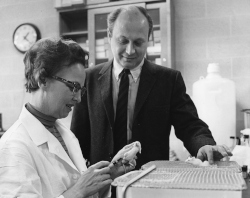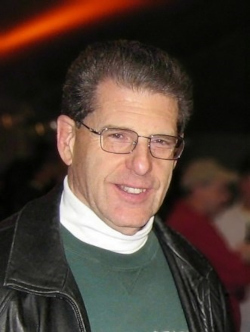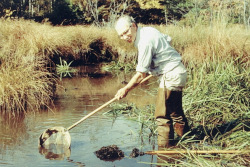
By Bianca Licitra
Later this month, the 14th annual Golden Goose Award will honor four scientists whose curiosity-driven, federally funded research ended up leading to major scientific breakthroughs.
The Golden Goose Award was founded in 2012 by a group of organizations including AAU and the American Association for the Advancement of Science (AAAS). Its creation was inspired by an idea from former Rep. Jim Cooper (D-TN), who wanted to counter misconceptions about basic research by demonstrating its immense positive impact on society. (“Basic research” refers to fundamental discovery research that seeks to expand knowledge without an immediate practical application in mind; basic research is the foundation upon which most major scientific and medical breakthroughs are built.) Today, the award finds continuous bipartisan, bicameral support from a “gaggle” of members of Congress.
As the deadline for Congress to pass the FY26 budget approaches – and with 40% of the National Institutes of Health budget and 56% of the National Science Foundation budget at risk – it is more important now than ever to highlight the necessity of funding basic scientific research.
This year’s awardees include:

Barnett Rosenberg
Barnett Rosenberg, Loretta VanCamp, and Thomas Krigas (Michigan State University, in memoriam) whose research into how electricity affects bacterial growth led to the development of cisplatin, a crucial chemotherapy drug.
When Rosenberg began his work at MSU with VanCamp and Krigas in the 1960s, he had not set out to investigate medical treatments; indeed, Rosenberg wasn’t even a cancer researcher. However, his team’s experiments led to an unexpected discovery – they found that bacterial cell division halted in the presence of an electric field. It took several more experiments to understand what was happening, but Rosenberg thought early on that their research could one day inform treatment of cancer. Eventually, the team discovered that it was the platinum compounds released from the electrodes that prevented “the DNA in cancer cells from replicating, confusing them and causing them to die.” Cisplatin, which is a platinum-based drug, came from this breakthrough.

According to MSU, “The discovery, patenting and FDA approval of cisplatin was a 13-year process made possible by federal funding from the National Institutes of Health and the National Science Foundation.” The drug was approved in 1978 and yielded unprecedented results – it increased “the survival rate for testicular cancer from around 10% to over 90%,” saving countless lives.
Joseph G. Gall (Carnegie Institution, Yale University, in memoriam) for his use of plant and animal organisms as models for biological experiments that led to breakthroughs in disease diagnostics and new knowledge about DNA and aging. Gall, known as “the father of modern cell biology,” frequently worked with frog egg cells in his research. His exploration of these cells led to the discovery of “lampbrush” chromosomes.

With early support from the NSF, Gall was able to study these chromosomes, which were large enough for manipulations and observations that would have been difficult on smaller chromosomes. The research ultimately led to the development of a technique called “in situ hybridization” that allowed scientists to locate and map genes. Today, the technique, which Gall developed working alongside one of his students, Mary-Lou Pardue, is widely used in scientific research and has many medical applications, including cancer diagnosis.
According to AAAS, later in his career, “Gall’s suggestion of Tetrahymena, a single-celled ‘pond scum’ organism, as a model paved the way for landmark discoveries involving stretches of DNA called telomeres, which have enhanced our understanding of aging.”
Gall often credited the NIH for supporting his lab’s development, as well as the NSF for its support of his students. In addition to his crowning scientific achievements, Gall is often remembered by his students for his outstanding mentorship. According to AAAS, “Gall was renowned as a mentor, particularly for women scientists at a time when it wasn’t the norm, and several highly accomplished, prize-winning scientists have come through his lab.”
Please join AAU in congratulating this year’s awardees!
Bianca Licitra is editorial and communications assistant at AAU.
Do you know of a federally funded research project that has led to immense scientific or technological changes or societal impacts? You can nominate individual researchers or research teams for next year’s Golden Goose Award.